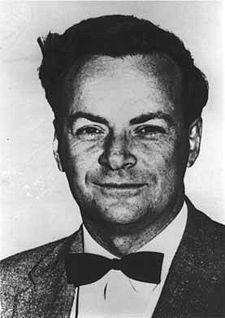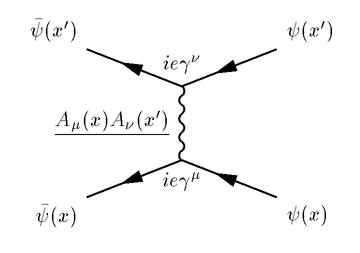
I’ve been meaning to write a ‘love letter’ to this man for a while, so here it is.
I’ll begin with a quote:
“I can live with doubt and uncertainty and not knowing. I think it is much more interesting to live not knowing than to have answers that might be wrong. If we will only allow that, as we progress, we remain unsure, we will leave opportunities for alternatives. We will not become enthusiastic for the fact, the knowledge, the absolute truth of the day, but remain always uncertain … In order to make progress, one must leave the door to the unknown ajar.” – Richard Feynman (1918 – 1988).
And this, my friends, is the definition of open-mindedness.
Note, in the quote there is not a shred of talk on accepting an unlikelihood outright and without evaluation – what Feynman hit on in it was an appreciation of healthy scientific skepticism. For him, new ‘facts’ only earned the title after significant evidence for their supposed relevance, and he understood the certainty that there’s simply so much we don’t know at present. So, instead of placing his bets with one side or the other on particular issues, he was, when alive, more than happy to sit on the fence until ‘his bets’ were again earned through the overwhelming likelihood solid observational evidence brings to a proposition.
And if this evidence never turned up, so what? The process, to him, was what was truly enthralling, and thoughts could be imaginatively and delightfully entertained without acceptance.
Uncertainty, he felt, for this reason, was exciting. Once a person, a scientist, is sure, they run the risk of falling into an outlook of complacency and wilful ignorance – a position which Feynman, perhaps more so than others, realised ran antithetically to the curiosity science needs to keep its cutting edge sharp.
Because science, for him, was never the dry, emotionless white-coat data-gathering of perhaps the public’s eye – it was an endeavour which only strengthened even an aesthetic appreciation of reality, like the Artist may wish to achieve (and even possibly more so).
Transcript*:
“I have a friend who’s an artist and has sometimes taken a view which I don’t agree with very well. He’ll hold up a flower and say “look how beautiful it is,” and I’ll agree. Then he says “I as an artist can see how beautiful this is but you as a scientist take this all apart and it becomes a dull thing,” and I think that he’s kind of nutty. First of all, the beauty that he sees is available to other people and to me too, I believe. Although I may not be quite as refined aesthetically as he is … I can appreciate the beauty of a flower. At the same time, I see much more about the flower than he sees. I could imagine the cells in there, the complicated actions inside, which also have a beauty. I mean it’s not just beauty at this dimension, at one centimeter; there’s also beauty at smaller dimensions, the inner structure, also the processes. The fact that the colors in the flower evolved in order to attract insects to pollinate it is interesting; it means that insects can see the color. It adds a question: does this aesthetic sense also exist in the lower forms? Why is it aesthetic? All kinds of interesting questions which the science knowledge only adds to the excitement, the mystery and the awe of a flower. It only adds. I don’t understand how it subtracts.”
Don’t you all just love the smile at “nutty”?
There are times, listening to Feynman’s Youtube-immortalised speech or reading his writing, when I notice just how genuinely he, as a person, found science utterly (and almost ‘childishly’) fascinating and wonderful. I can’t help but feel it’s a big part of what made him so likeable.
And I say ‘part’, because there’s more of course. While still on the art theme, it’s worth noting that Feynman became quite the ‘accomplished draughtsman’ himself, thanks to the help of the ‘friend’ he mentioned. This ‘friend’, Jirayr Zorthian, in an interview, tells of how he and Richard – early on in their friendship - both admitted to admiring Leonardo da Vinci, but for two different reasons. Feynman looked up to ‘Leonardo the Scientist’, and Zorthian appreciated the refined hand of ‘Leonardo the Artist’. So, what to do in this situation? As always, Dick had an idea…
Feynman: “What do you say we become two Leonardo da Vincis?”
And with each other’s help, they did. Nearly every Sunday – for eight years – they would meet to talk Art and Physics, brining a lot of joy to each other’s lives.
I remember hearing/reading, though I fail to recall where, that Feynman’s colleges may have gotten annoyed at his many impulsive, time-consuming, non-scientific hobbies (like the art) while working with him – but he, rest assured, had something to say on that too:
“Fall in love with some activity, and do it! Nobody ever figures out what life is all about, and it doesn’t matter. Explore the world. Nearly everything is really interesting if you go into it deeply enough. Work as hard and as much as you want to on the things you like to do the best. Don’t think about what you want to be, but what you want to do. Keep up some kind of a minimum with other things so that society doesn’t stop you from doing anything at all.”
Don’t get me wrong, he loved science! It’s just that he recognised that compassion and love itself were very important too, and that people simply thrived when doing something which gripped their imagination and curiosity. For him, that was often science, but he was a man of many talents. As well as being an Artist in his own right he acted in University theatricals and played the Bongos (and all quite well too). He was, once again, far from your stereotypical ‘white-coat’ computer of a Scientist.
 Which was, I guess, part of what won him the Nobel prize for Physics in 1965. His funny-looking ‘Feynman diagrams’ (an example pictured right) allowed calculations of interaction probabilities between different particles to be performed in a graphical manner, essentially getting around the problems conventional Mathematics had with the the task (which many Scientists were used to and stuck with trying to fix).
Which was, I guess, part of what won him the Nobel prize for Physics in 1965. His funny-looking ‘Feynman diagrams’ (an example pictured right) allowed calculations of interaction probabilities between different particles to be performed in a graphical manner, essentially getting around the problems conventional Mathematics had with the the task (which many Scientists were used to and stuck with trying to fix).
He was bored of looking at it one way, so he invented another angle. Genius.
And when it came to accepting the aforementioned prize for his brilliance, he was reluctant. One, he didn’t want the publicity it brought (but of course, publicly rejecting it would have caused a bigger storm than smiling and waving); two, he (really, really) didn’t like ‘honours’; and three, for him, the real prize was simply the ‘pleasure of finding things out’, and no shiny medal could match that feeling.
…
For this, and so much more, I admire the man as he admired Leonardo da Vinci.
I would have loved to have been able to meet him.
Carnun 
___
*(Americanisms intact.)

